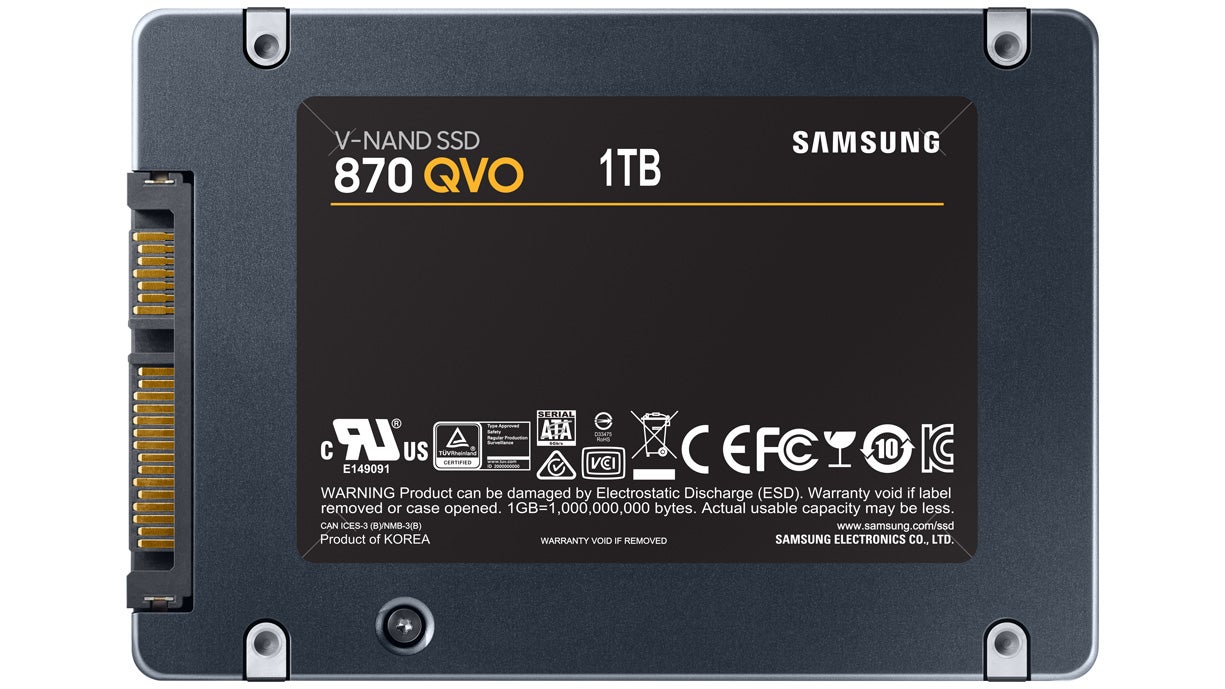So how have Samsung produced a 7mm tall SSD that packs in so much storage space? Unlike most of Samsung’s drives, the Qvo series uses QLC NAND, meaning it stores four bits per cell instead of two (MLC, used on Pro series drives) or three (TLC, used on Evo series drives). That, combined with vertical stacking of the flash memory modules, allows the Korean chaebol to offer higher capacities than would otherwise be possible for a given price or form factor, which has lead to the existence of that flagship 8TB model.
- signifies data that has yet to be confirmed by Samsung, but was previously rumoured. One downside of 4-bit flash memory though is that random reads and writes can often be quite a lot slower than you’d expect from 2-bit or 3-bit memory - but this is ameliorated somewhat if you do go for one of the large capacity drives. That’s because each drive in the 870 Qvo family comes with a proportionally-sized DRAM cache, which massively speeds up access to recently used data. On the smallest 1TB model, you only get a 1GB cache, but this scales up all the way to an 8GB cache on the 8TB drive. That’s a pretty impressive size - it’s at least the amount of RAM you’d expect to find on a full entry-level PC! - and it means that actually filling that cache is pretty unlikely for normal consumer applications like moving files around or playing games. We actually have the 8TB model in for testing, and so far we’ve been very impressed with its gaming performance, with no noticeable difference in load times between the 870 Qvo and higher-grade SATA SSDs that use TLC or MLC NAND flash modules. You can see screenshots of some common synthetic benchmarks we’ve performed below. Sequential read and write speeds look strong, coming up against the limits of the SATA-3 interface, while random operations also look competitive - especially for a QLC drive. Samsung quote sequential read speeds of up to 560MB/s, sequential writes up to 530MB/s and random read and write figures of 98K and 88K IOPS, respectively, all of which have been more-or-less borne out in our testing. Note that while NVMe drives are noticeably faster in synthetic benchmarks like these, often achieving sequential reads and writes in the thousands of megabytes per second, you should only expect a small decrease to game load times on NVMe - although the advent of next-gen consoles with dramatically faster NVMe drives may change this. If you’re after an extremely capacious drive for your game installs - or even downloaded media - then the 870 Qvo should be a strong choice, especially once the drive has been out for a little while and both prices and stock have had time to stabilise.
We plan to take a closer look at actual in-game performance in the coming days, and we have a few ideas on how best to utilise its unparalleled capacity in this 2.5-inch form factor as well. Stay tuned!


